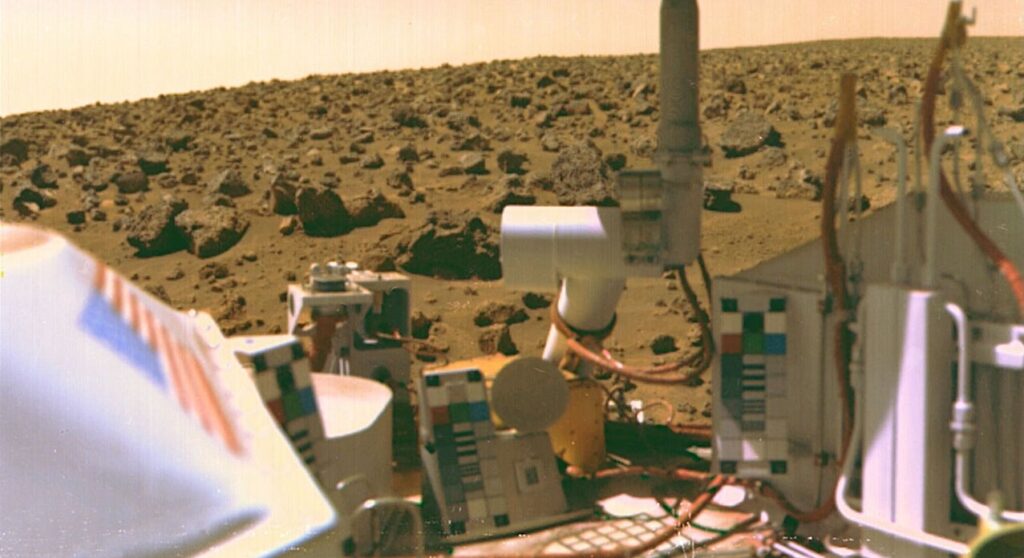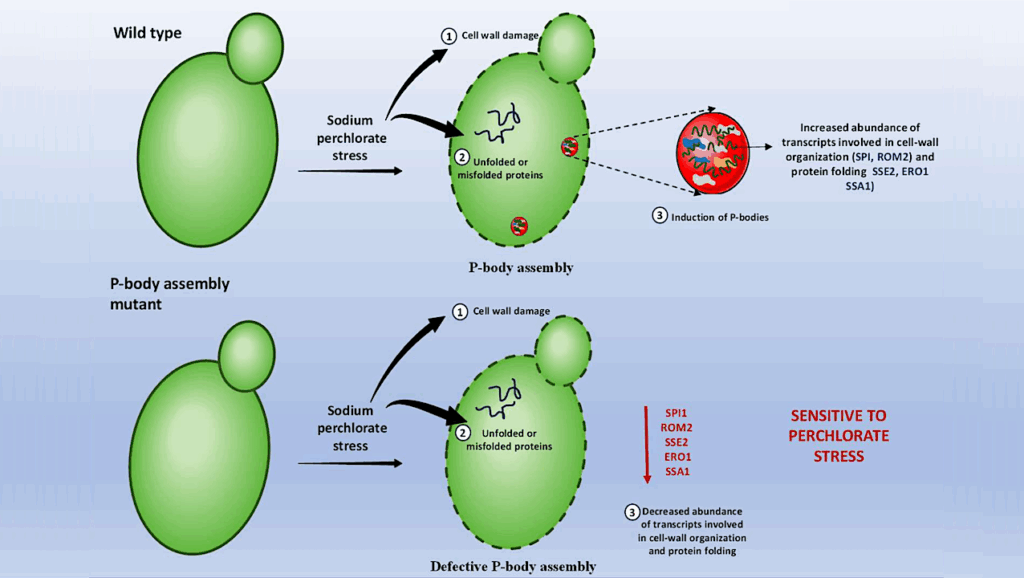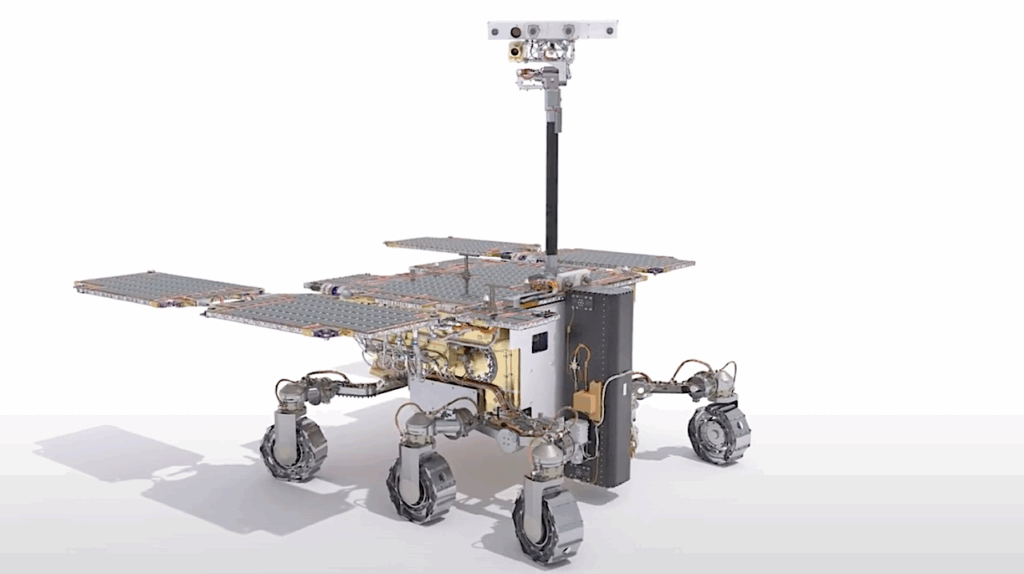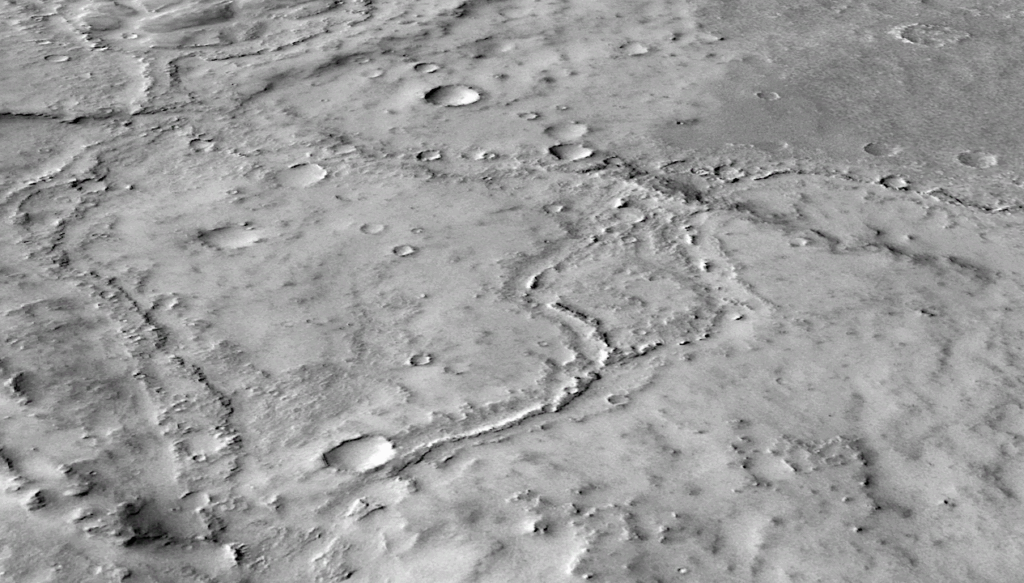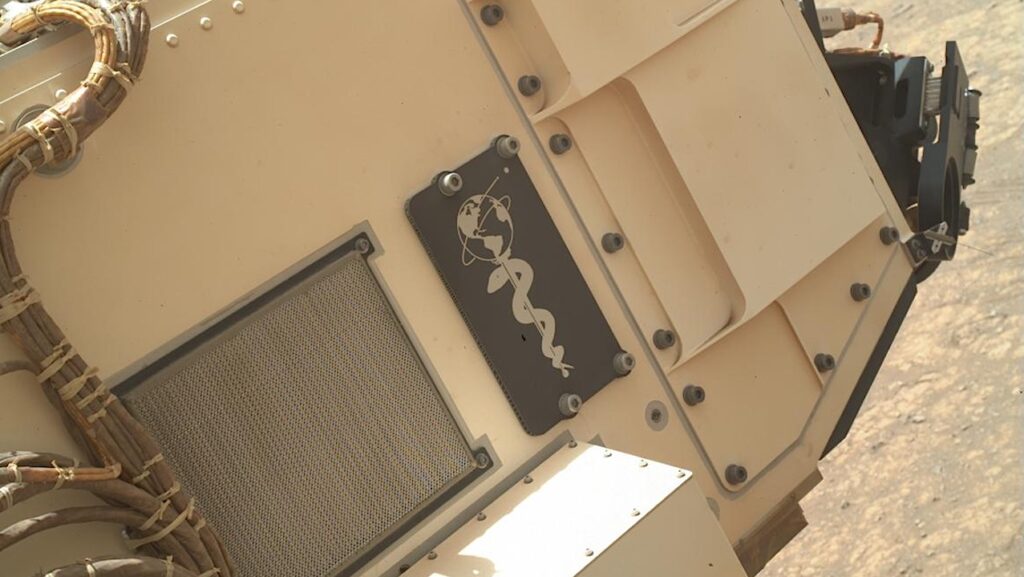Mariner 9 Hopes to Answer Long Awaited Questions

Is Mars totally bleak and inhospitable to life? Or could water still be found on the planet? What role do dust storms play in forming Martian clouds?
These questions may be answered, at least in part, starting November 13 (PST) when Mariner 9 goes into orbit around Mars for a minimum 90-day study period in the National Aeronautics and Space Administrations’s most amibitous planetary trip.
Space scientists hope to receive more definitive, and perhaps encouraging, readings, from their instruments than those received in the 1969 flybys of Mariners 6 and 7. The results of those flights changed centuries-old concepts of Mars as a friendly habitat for some form of life to a cold, barren planet as hostile as Antarctica.
Mars’ South Pole was shown to be much colder than Earth’s–dry-ice cold, down to -240 degrees, Fahreinheit. The south polar cap appeared to be almost 100 per cent frozen carbon dioxide, with virtually no water ice. Mars’ equator registered a low of -45 degrees, F., and a high of about 65 degrees. Only traces of Martian water vapor have been detected by Earth-based telescopes. Aboard Mariner 9 is a water-vapor sensitive instrument called an infrared interferometer spectrometer (IRIS). It is one of two infrared instruments–the other is the infrared radiometer (IRR)–which could provide more exact data on the temperatures and composition of Mars’ surface and lower atmosphere.
With Mariner 9 swooping to within 750 miles of the planet, Dr. R. A. Hanel of NASA’s Goddard Space Flight Center, Maryland, IRIS team leader, says the IRIS instrument should be able to provide clues where liquid water may exist on Mars, if there is any. Moist areas would be of particular interest to biologists.
The discovery of an organic compound or some member of the carbon family would be a hopeful sign of developing life, however primitive, on the planet. While apparently hostile to common earthly forms of life, Mars may foster its own rugged unearthly organisms.
Some support for this hope was indicated in 1970 experiments by researchers at Caltech’s Jet Propulsion Laboratory who produced three organic compounds in the laboratory simulating Martian soil, atmosphere and ultraviolet radiation.
The compounds (formaldehyde, acetaldehyde and glycolic acid) were named likely to be produced by sunlight on the surface of Mars. The investigators also believed these compounds were precursors to biological molecules on the primitive Earth. Final determination of life on the planet, however, probably will have to wait for a landed system analysis later in the 1970s.
By measuring the radiation from the surface and lower atmosphere in infrared wavelengths, the IRIS instrument should furnish information on the composition of the surface, on surface pressures, and on atmospheric and surface temperatures.
The composition of the polar caps, particularly the edge of the southern cap as it melts in the Martain summer, will be another IRIS study. Surface minerals may be identified, along with their thermal conductivity, density and temperature.
Daily temperature variations around the globe will be recorded by the IRR. General soil temperature readings will be taken of about 70 per cent of the planet’s surface, according to Dr. Gerry Neugebauer, Caltech physicist who heads the IRR team.
The IRR is calibrated to take midmorning and early evening readings along the line of flight each day. Mariner 9 will orbit the planet twice daily and the changing flight paths will afford a crIt will be summer in the south, winter in the north during the Mariner-go-round.
The swivel limitation of the instrument platform will prohibit noon ornight readings, but high and low temperatures can be calculated from the other readings.
Other information to be sought by the IRR: Cooling curves around the globe, and possible hot spots–perhaps volcanoes or radioatrs f comparatively recent origin. The twored instruments will team up with Mariner’s two TV cameras in a special yellow cloud alert on or about December 14. Dr. Gerard deVaucouleurs, University of Texas astronomern member of the television experiment team, has predicted that the bright yellow cloud will appear over the Libya-Moeris Lacus area just north of the Martian equator.
The cloud, presumed to be a dust storm, will last for about a week, moving at speeds up to 65 m. p. h. (100 Km) in a southeasterly direction.
Dr. deVaucouleurs based his prediction on five previous clouds over the region observed by Earth-bound astronomers when Mars was in similar close proximity. On each of these five occasions–oppositions, as astronomers call them –since 1911, the bright yellow cloud was sighted.
Mariner’s cameras and infrared instruments will be tuned in for an exhaustive analysis of the predicted atmospheric phenomenon.
The 1971 Mariner Mars project is being managed by JPL for NASA.
818-354-5011
1971-0599
Astrobiology



